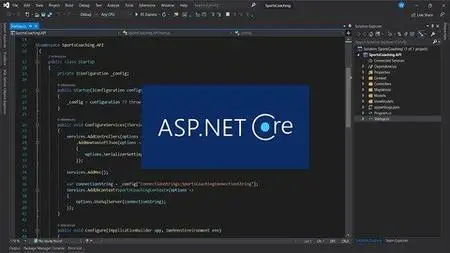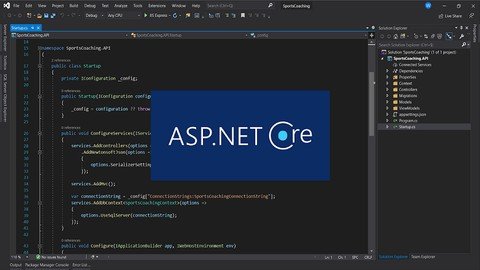Create your first API with ASP.NET Core
Genre: eLearning | MP4 | Video: h264, 1280x720 | Audio: AAC, 48.0 KHz
Language: English | Size: 1.38 GB | Duration: 2h 32m
Genre: eLearning | MP4 | Video: h264, 1280x720 | Audio: AAC, 48.0 KHz
Language: English | Size: 1.38 GB | Duration: 2h 32m
Fundamentals and tools to create a Restful web API with ASP.NET Core MVC technology
What you'll learn
Create a web API with ASP NET Core
Entity Framework Core
CRUD
LINQ
Code first
MVC
Use Postman
Use Visual Studio
Description
ASP.NET Core supports building RESTful services, also known as web APIs, using C#. To process requests, a web API uses controllers. Controllers in a web API are classes that derive from ControllerBase. This course explains how to use controllers to handle Web API requests.
You will learn through this course how to create a web API with ASP.NET Core, you will be led to use different techniques and tools, such as :
MVC
Entity Framework Core
LINQ
Code First
Migrations
DbContext
Routing
ViewModels
CRUD
Postman
In this course, I have focused on the GET, POST, PUT, PATCH, and DELETE methods.
Thanks to the HttpGet attribute of ASP.NET Core, we can query, in read, an API very easily.
HttpPost to sen a request to create a new resource.
HttpPut to fully modify a resource.
HttpPatch to partially modify a resource.
HttpDelete to delete a resource.
I am using the MVC architecture pattern.
The Model-View-Controller (MVC) architectural model separates the application into three groups of main components : Models, Views, and Controllers. The model allows for the separation of concerns. Using the model, user requests are routed to a controller that is responsible for working with the model to perform user actions and/or retrieve query results. The controller chooses which view to display to the user and provides them with all the model data they need.
You will find the source code of the solution at the end of each chapter.



